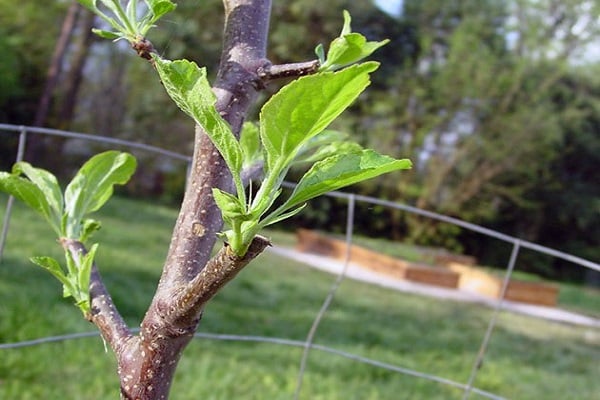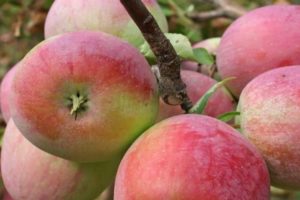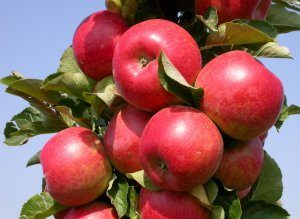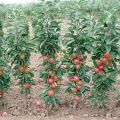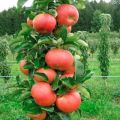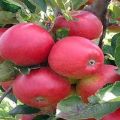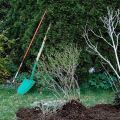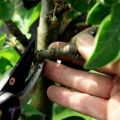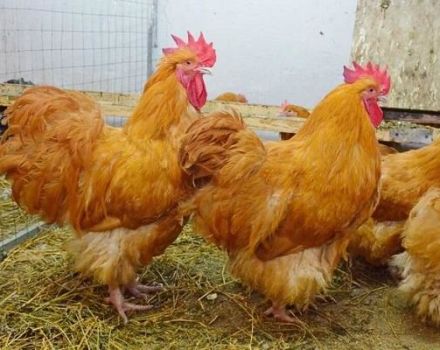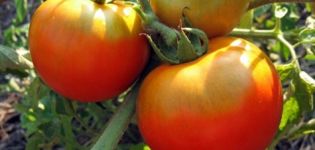Growing and caring for a columnar apple tree, at what distance to plant
Apple trees are traditionally very popular in our country as a garden culture. But these plants grow quite large, and in a limited area it is rarely possible to plant more than two or three. Despite the periodically appearing criticism of the columnar varieties, the columnar apple tree appears more and more often on the plots, the variety has won its own niche. However, not everyone knows exactly how to care for such trees. The article will cover the main aspects.
Description and features of the columnar apple tree
Many summer residents fell in love with columnar varieties, which allow, with small trees, to get good yields. Subject to the rules of care and cutting and feeding technologies, you can get tasty and beautiful fruits in large quantities, which are suitable both for direct consumption and for canning for the winter.
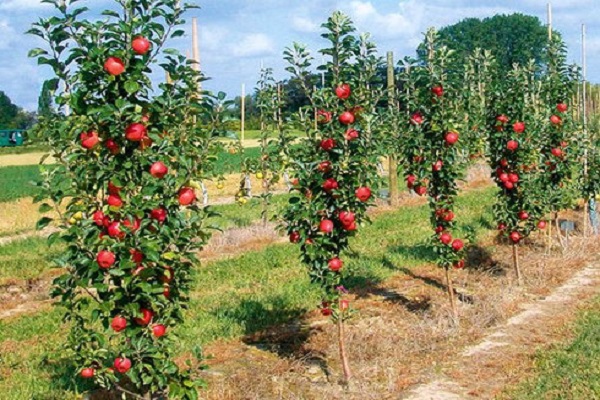
The special structure of the trunk of representatives of columnar varieties is associated with a genetic mutation. Due to this, the side branches grow in a certain way, and the central trunk becomes much thicker. The average height of such trees is considered to be three meters. Although different varieties of different sizes are cultivated.
The stems of the columnar apple are thicker than those of other varieties, while the distance between the buds is less. Branching depends on stature - the higher the tree, the more it branches. Moreover, the difference between the smallest representatives and the largest plants can be up to three to four times.
Upon reaching the age of four, lateral shoots stop growing. It can be activated only if the growth point at the top is injured.
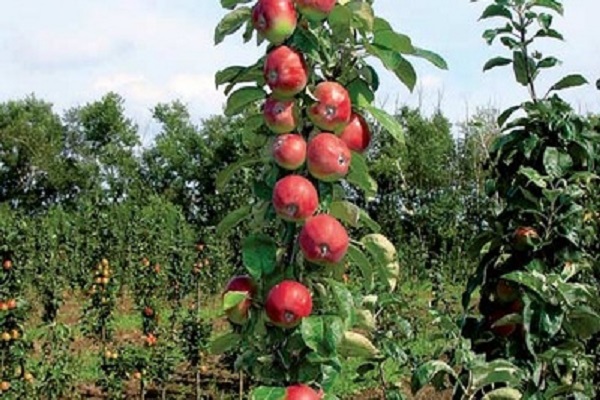
The first full crop can be harvested two years after planting. Trees reach their peak yield within five years, then the level remains stably high, subject to the required agricultural technologies. The type of root system of columnar plants is fibrous. Its development also affects fruiting.
The active lifespan of a columnar apple tree, when it bears well, is fifteen to twenty years. After that, the number of fertile buds is sharply reduced. The only exceptions are tall varieties. Moreover, in each individual case, the lifespan of a tree may differ.This is due to the fact that to increase the duration of the fruiting period, you can apply top dressing, as well as cut off, for rejuvenation.

The described columnar varieties are well placed in small garden areas. There are two types of columnar apple trees:
- containing a mutation in the genotype;
- apple trees to which the varieties are grafted dwarf apple trees columnar type.
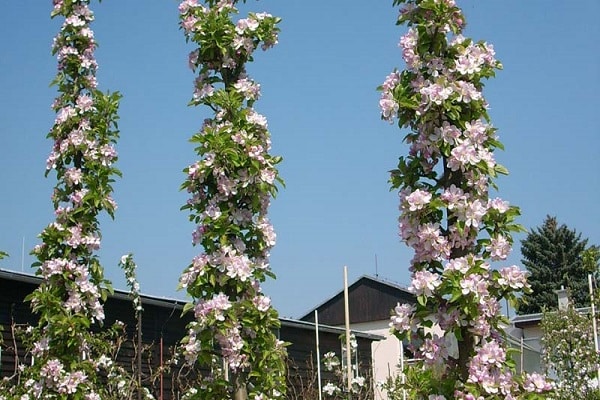
Carrying out pre-boarding activities
Due to the nature of the rhizome, columnar tree varieties require a nutrient-rich soil that is well ventilated and moist. If the soil has a high clay content, then additional drainage work will be required. Groundwater should be as deep as possible. Also, the area should be well lit, drafts should be excluded. Only the observance of all growing conditions will allow obtaining maximum yields and ensuring active growth.
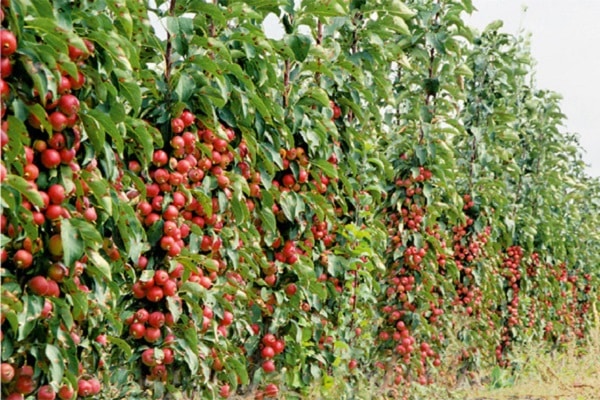
Terms
When purchasing columnar seedlings, it is necessary to take into account the conditions in which they will grow. Therefore, when buying, you need to consult with sellers in order to choose the most suitable varieties for the existing conditions.
Growing healthy, fruitful columnar trees will require a well-lit area without drafts, with well-moistened soil. Do not forget that columnar varieties are available for cultivation in greenhouse conditions.

Landing dates
For planting, you need to choose the right season so that the seedlings begin better and get sick less. In the suburbs, this is the middle of spring and autumn.
Experienced gardeners advise planting in early spring weather:
- before active sap flow begins;
- when the ground has already warmed up enough.
In the autumn, planting should be done:
- after the leaves have fallen;
- in the period before the first frost, so that the plant has time to settle down.
Planting apple trees in summer is not recommended.
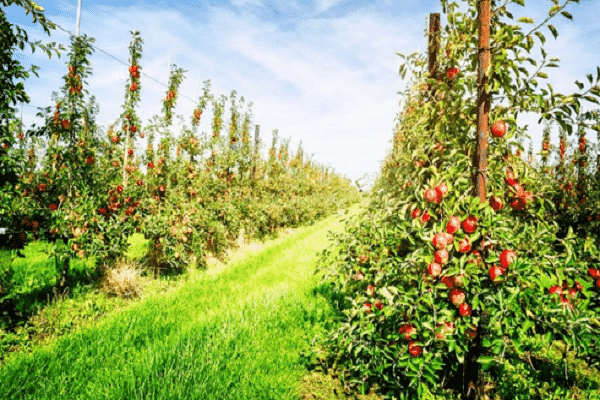
Sapling storage
The root system should not dry out. Before planting, it is better to temporarily dig the tree into loose soil and water it. If the rhizome is closed, then moderate watering is required every two days. Also, for storage, moistened wood shavings are suitable.

Landing plan
Before planting, you must read the advice of professionals. If the planting involves a large number of trees, then it is better to draw up a diagram, which will take into account the necessary distances between individual seedlings. They depend on the specific variety and further growth.
Columnar plants are planted so that in adulthood they do not interfere with each other's growth.

Choosing a landing site
Experts recommend in advance to secure the area for planting columnar apple trees from gusts of wind. In this case, it is necessary to ensure sufficient illumination and the absence of shadow zones. Fences and fences are suitable as shelter from the wind. You also need to take into account that although the plants are small, they still need more space as they grow.
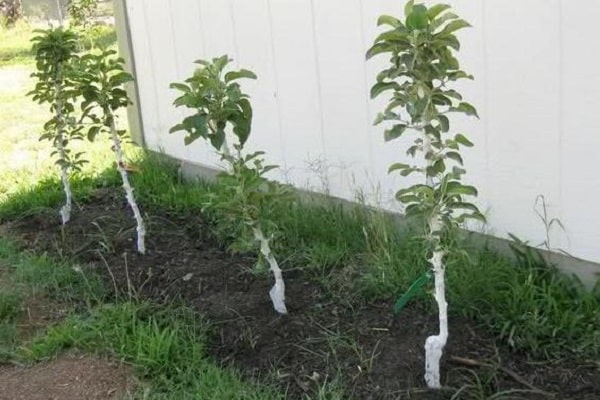
Pit preparation
The seats are prepared as follows:
- Grooves for group landings can be up to half a meter deep.
- For point planting, pits of the same depth are dug.
- It is recommended to dig it up in advance so that they stand for at least two to three weeks.
- The sizes are determined based on the rhizome. The greatest depth can be up to ninety centimeters, the radius is up to half a meter.
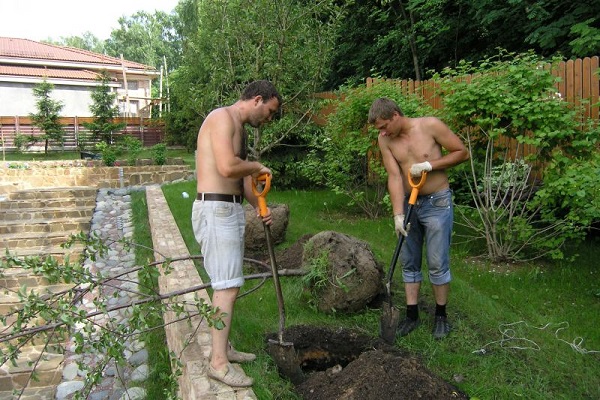
Planting seedlings
It is better to plant specimens no older than one year. Despite their small size, compared to older seedlings, they will take better, which will have a beneficial effect on further cultivation. Planting is optimal in the spring, before the start of sap flow and budding.
The drainage substrate can be made of fine crushed stone and sand mixture up to a quarter of a meter thick.Drainage is performed from coarse gravel and sand with a layer of at least 20-25 centimeters. The extracted soil is mixed with compost components, fertilizers are added. Phosphates and potassium salts are suitable.

Root processing
The roots are immersed in water for a while before planting. For better survival, growth activators are used. For this, the rhizome is placed in a solution for half a day. Before planting, the rhizome is treated with a clay mixture.

Accommodation in a landing pit
The plant is aligned perpendicular to the surface of the earth, the rhizome is straightened, a support peg is installed. The roots are straightened so that tangling and kinks do not occur. The fossa is filled up carefully so as not to damage the roots. Start at the edges and work towards the stem. The hole filled up to the middle is tamped a little.
We pour five liters of water taken from a home tap. After all the liquid has been absorbed, we check the location of the graft scar. We place it three centimeters above the ground level.
Next, the hole is completely buried, rammed without much pressure. A recess is left around the trunk for subsequent watering. It is watered, mulch is added.
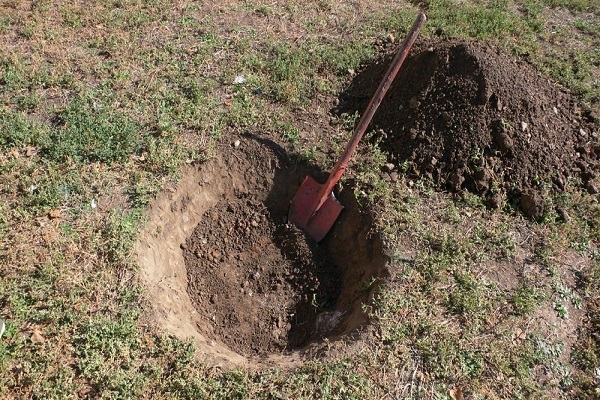
Planting and watering
Planting a seedling is not enough. After burying, the soil is rammed and watered. One hole takes up to twenty liters. Then mulching is carried out.
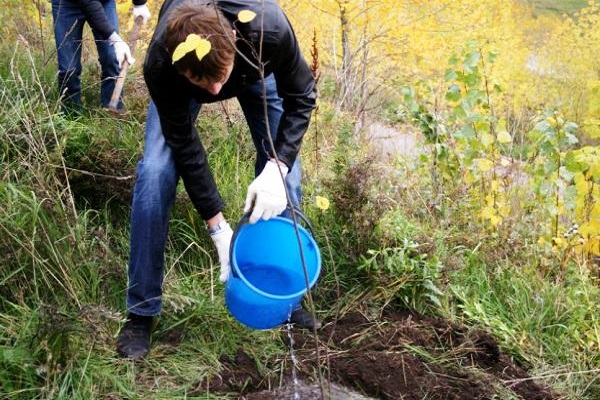
Care rules
After planting is completed, the seedlings are fed, watered, cut.
In the spring, the branches are pruned and a composition is applied to prevent disease and pest infestation. This is done before the start of sap flow. Nitrogen fertilizing is also introduced.
In the first year after planting, flower buds are removed from the plants. In the second year of life, about ten buds are left. Over time, more and more flowering shoots are left.
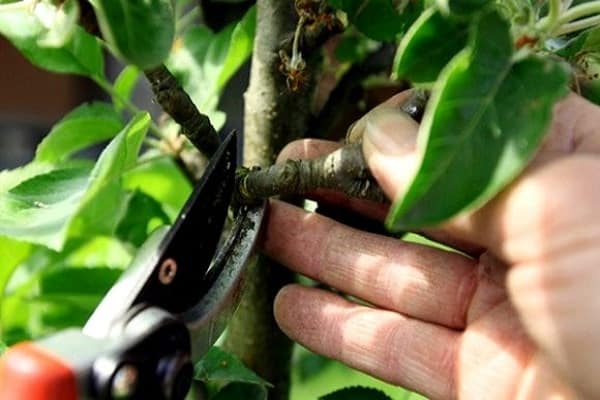
Watering columnar apple trees regularly, as the soil dries out. Loosen the resulting crust. Loosen gently and shallowly so as not to hurt the roots. Sometimes we use tinning the hole around the seedling. The use of such agricultural techniques makes it possible to avoid loosening and, thereby, keep the roots intact.
They are fed in early summer with inorganic fertilizers. The pollinated inflorescences that have appeared are partially removed so that the plant does not overload. When the small apples reach one and a half centimeters in size, only two fruits are left on each inflorescence. Subsequently, the smaller fruit is also removed.
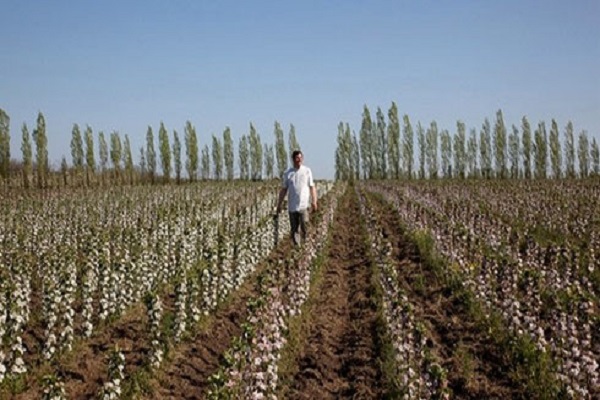
In summer, it is easier to care for columnar apple trees, but prevention of the presence of pests and diseases is required. If symptoms of diseases or traces of parasites are found, urgent measures are taken. Trees are treated with special compounds. Also, for prevention purposes, they are sprayed with chemicals before and after flowering. The last processing is allowed to be carried out no later than one month before harvest.
At the end of summer, we make top dressing containing potassium salts. From them, young shoots are formed faster, and will not freeze in winter.
In late autumn, sometimes, after harvesting, we feed and process them against pests and diseases. Cut off excess shoots.
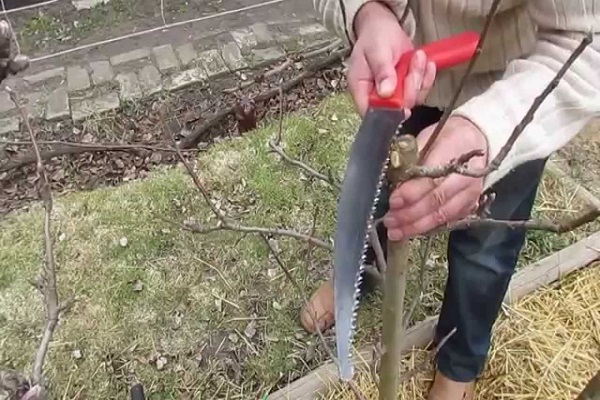
Watering
Regular irrigation makes the fruit juicier. Gardeners make sure that the plants are adequately watered throughout the season. For effective distribution of moisture, trees are dug in and form holes so that the water does not spread. One tree takes up to twenty liters. After watering, the surface is mulched. The frequency of watering depends on how regularly it rains, as well as the type of soil in which the seedling is planted. On average, plants are watered twice a month.

Fertilizing fruit
After budding, gardeners feed the apple trees. Fertilizers are applied in the spring, when sap flow begins. The procedure is repeated two more times, every half month.
Most often used:
- chicken manure;
- cow dung;
- urea solution;
- saltpeter;
- a complex of fertilizers.

The nuances of trimming
It is believed that the columnar varieties do not require pruning as they do not distill off. But this is not the case. Sometimes, under unfavorable conditions of development, lateral shoots grow, which spoil the crown. Cut them off or not - everyone decides for himself.
The most favorable periods for pruning are spring season, early summer and autumn. Pruning is carried out for several years.

Each year requires:
- First year. We cut off all the processes from the side, making the main stem shorter.
- Second year. We cut new shoots, leaving no more than thirty centimeters.
- Third year. The top is shortened to twenty-five centimeters, leaving forty centimeters on the side.
- Fourth year. We remove the excess and bad processes of the last year.
- Fifth year. The trunk is trimmed so that the total length of the tree is no more than three meters.
- In the future, unnecessary shoots are removed.

Tinning of columnar plants
The rhizome of columnar apple trees is designed in such a way that it is very afraid of drying out the soil. Therefore, constant hydration is required. For this, mulch or peat crumbs are added. But the easiest way is to tin the surface around the trunk.
Sowing with lawn grasses or other types of low-growing vegetation provides protection from the sun, the roots are sufficiently moist. At the same time, the grass does not inhibit the growth of the tree. The grass cover is mowed periodically.

Protection against diseases and pests
There are many diseases and parasites that can harm columnar apple trees. These are insects, fungi, mold, microbes and viruses. Periodically, the crown and bark of plants are treated with special formulations for pest control. Otherwise, it will be difficult to get a good harvest.
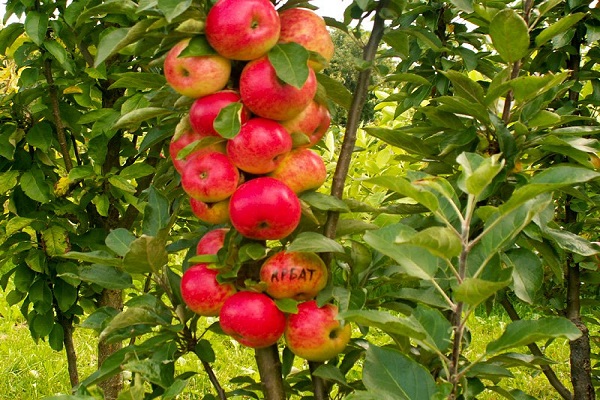
Protecting columnar apple trees in winter
Columnar apple trees need protection during the frosty period. We remove the mulch from the straw so that rodents do not start. The trunk is covered, snow is best. It is important to prevent freezing of the trunk and kidneys, which occurs when getting wet and freezing.
We wrap the growth point especially carefully in order to prevent it from freezing. We prepare the pole to which the tree is tied so that it does not break from the wind.
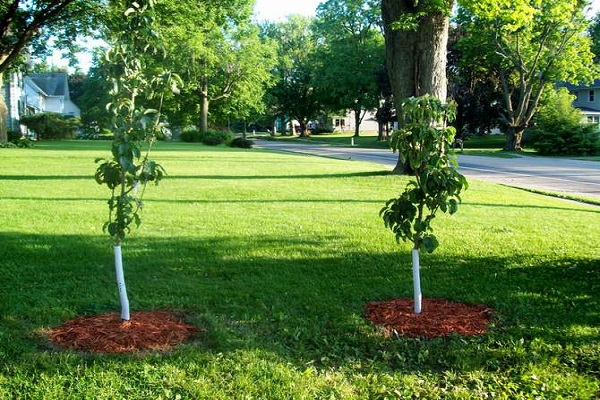
Harvest
Since the columnar apple trees are of short stature, special tools and equipment for harvesting ripe fruits are not required. Fruit picking begins as it ripens. It depends on the variety. Depending on the purpose of use, the fruits are either put into the basement for storage, or prepared for further processing.
